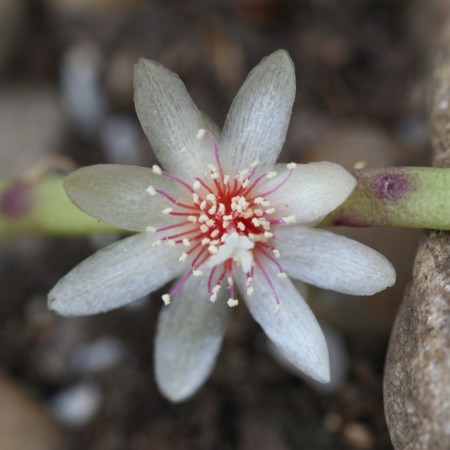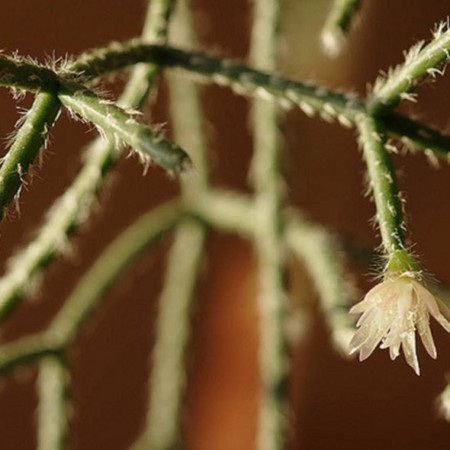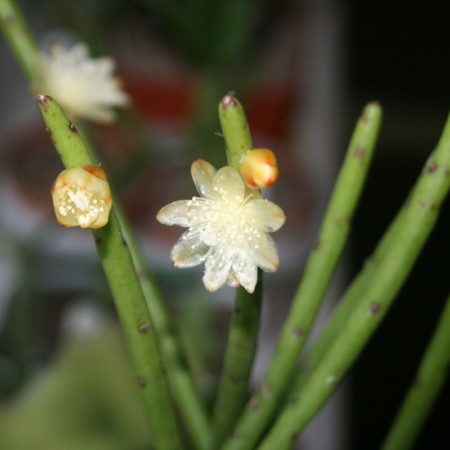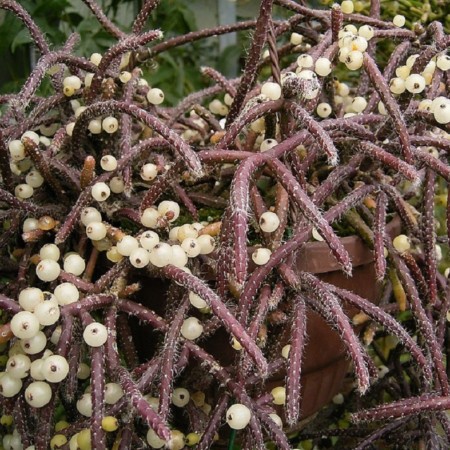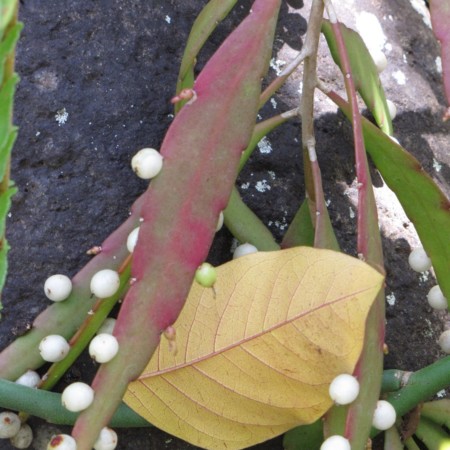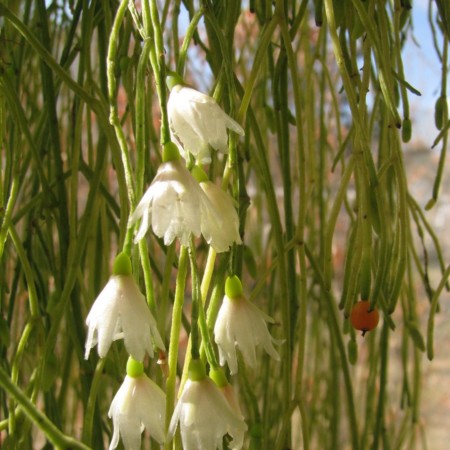(Photograph = Rhipsalis sp from Brazil)
Introduction
The subfamily Cactoideae contains mostly plants adapted to arid environments. However, the Rhipsalideae is a small tribe of four genera that contains plants which grow in humid areas. Typically the plants are epiphytes (or lithophytes) in tropical rainforests. While succulent, they are not adapted to deserts. But, they are adapted to the scarcity of water that can occur in the forest canopy between rains.
The Details
The four genera of the Rhipsalideae are Haitora, Lepismium, Schlumbergera, and Rhipsalis. Rhipsalis contains the most species (several dozen) and most members of the tribe were placed in Rhipsalis at one time or another. They generally have small flowers.
Rhipsalis plants are known as the mistletoe cacti because they can seem similar to the leafless types of mistletoe and they often have small white berries that mimic mistletoe berries. Some species have yellow or reddish fruits.
The shape of Rhipsalis plants is variable. Most commonly they form hanging plants with cylindrical, triangular, or flattened stems. They can hang many feet, forming veils of vegetation that drop from tree limbs.
Some Rhipsalis species make acceptable houseplants, because they do well in poor-light conditions and need only small flower pots.
Other hanging cacti (such as Pseudorhipsalis) are in the tribe Hylocereeae and are not especially closely related to Rhipsalis.
Additional Reading: Stem Anatomy of Rhipsalis

